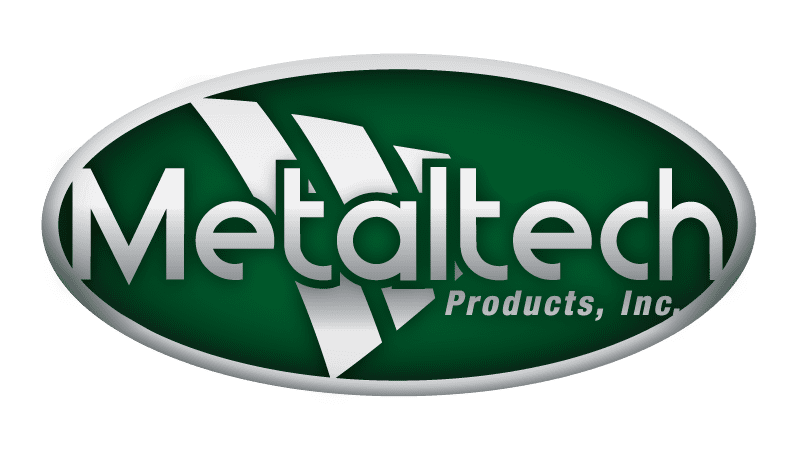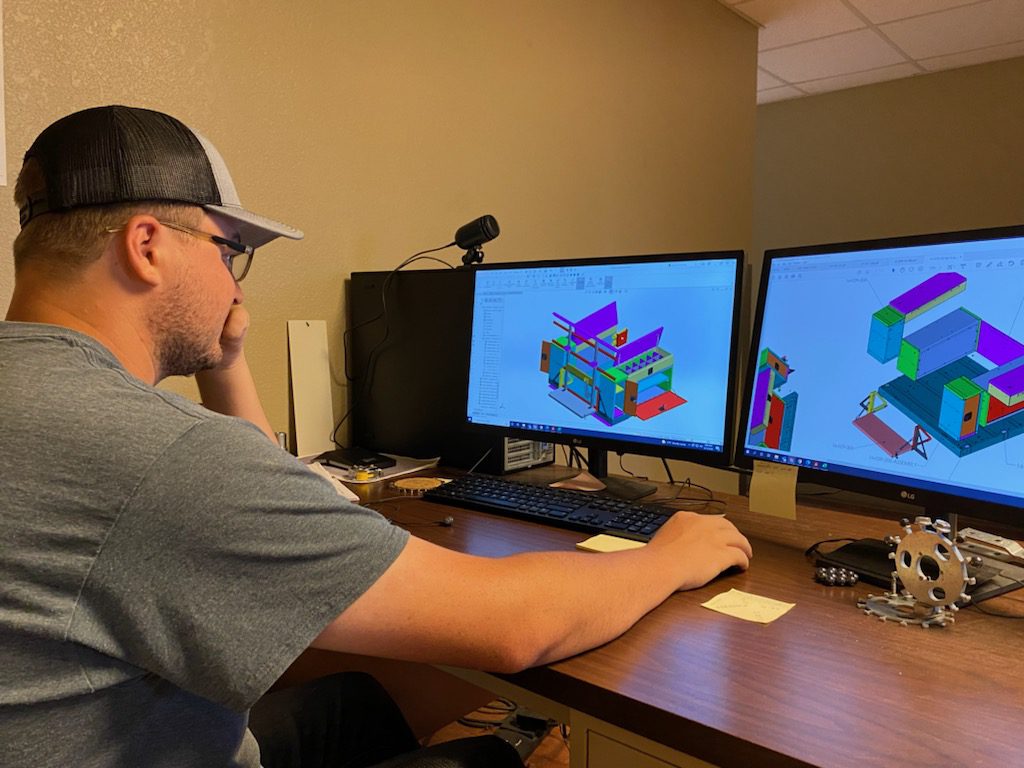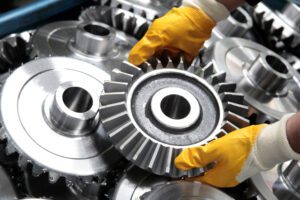You have an idea. You need to jot it down quickly, using whatever is nearby. Napkins and scrap paper work well for initial thoughts, but there’s only so far a rough pen sketch can take you.
If you plan to manufacture your idea, you must flesh out the dimensions and ensure the part will function as intended. Only then can you create a finalized blueprint for metal fabrication.
Physical 2-D drawings don’t allow you to thoroughly explore your designs. You’d have to manufacture the part, test it and adjust, repeating the cycle and using resources until you perfect the part’s design.
Instead of creating one physical prototype after another, solid modeling lets you visualize and test components in digital 3-D. Metaltech Products, Inc. uses solid models to test for form, fit and function before producing the final parts.
Enter the world of solid modeling, and learn how metal fabrication companies utilize computer-aided design (CAD) technology.

Solid Modeling in Part Design
Models that are 2-D show us flat objects. Models that are 3-D show us solid objects. Solid modeling uses a series of mathematical principles and the concept of Euclidean space to represent components in 3-D.
In geometry, Euclidean space is a 2- or 3-D space where points are connected. It’s a mathematical representation of physical space. Engineers map out this space digitally via CAD software to create detailed illustrations of components.
CAD Techniques: Wireframe, Surface & Solid Modeling
Solid modeling is more sophisticated than wireframe and surface modeling. CAD wireframes are basic, 3-D outlines of the part. Surface modeling goes one step further by filling in the outline, which creates a 3-D illustration.
Engineers need more than a 3-D representation of a part. They need the ability to manipulate that representation. Solid modeling allows engineers to test and apply stress to the digital model as if it were a physical object.
Solid modeling offers:
- A complete view — You can model the inside and outside of a component. Solid models show the part from all angles and can be “cut” open to reveal internal structures.
- Geometric accuracy — All surfaces of the component meet. A solid model of a component is mathematically correct.
- Dimensional data — Solid models include necessary data about the part’s size, shape and angles.
- Clarity — Solid models are sophisticated illustrations. Their realistic appearance lets you see what the part will look like once it’s made.
Testing for Form, Fit & Function
Custom metal parts are rarely complete on their own. Most components are one piece of a machine, mechanism or consumer product.
For a metal component to work, it needs to have the right shape and fit within its larger context. No one wants to get to assembly only to discover that the component is slightly too large or small to install.
With solid modeling, engineers can test for the basic principles of form, fit and function. CAD solid models let you visualize how the part interacts without producing a physical prototype.
- Form refers to the shape of the component.
- Fit ensures a component can connect or join with another.
- Function looks at how the component operates.


CAD Prototyping: Why Solid Models Take the Win
Solid modeling benefits engineers, fabricators and customers. Having solid modeling available streamlines the design process for all stakeholders. The final design—tested in a digital space—is less likely to cause confusion between parties or need to be reworked mid-production.
Many engineers and designers find that solid modeling makes their work more accessible and effective. The advantages of solid modeling include:
1. Saving Resources
Save time and resources with solid modeling. Physical prototypes require materials and production time on the floor. Machines must be programmed to create the prototype, and you may have to produce several iterations before the design is ready.
Digital solid models don’t use materials or take up machine time. While labor is still involved, it’s limited to the engineer or designer creating and testing the solid model on the computer.
Many metal fabrication companies start with solid modeling, adjusting the design before creating a physical prototype.
2. Seeing the Component from Every Angle
Since solid modeling presents a 3-D object, you can examine the component’s design from every angle. Unlike 2-D design views, engineers can move the 3-D models around to view the top, bottom and sides—and any angles in between.
3. Inspecting Part Dimensions
Components follow set dimensions to ensure they will work with other components in operation. Engineering drawings include instructions and dimensional tolerances for the part and its features.
Solid models provide a depth of detail and visualization you can’t get with a flat drawing. This makes communicating with customers and collaborating across departments easier, ensuring the part dimensions and features are accurate.
4. Making Other Processes Easier
Companies can streamline processes by integrating solid models into other programs they use. Solid models can show how to produce the component or write manufacturing programs and code, which saves time programming CNC machines.
5. Sharing Realistic Illustrations
A realistic model helps everyone get on the same page. While the illustrations aid design and manufacturing, other departments can use them to educate team members, create instructional manuals for products, or help with the sales process.
Explore, test and tweak your design in digital 3-D before you create physical prototypes. Solid modeling is beneficial whether manufacturing a brand new product or upgrading a component’s design.
Start Your Custom Metal Fabrication Project
Need to manufacture custom components? Is your company looking for design assistance? Bring your part design and fabrication needs to Metaltech!
Metaltech offers advanced product design services and prototyping. We provide the assistance you need, no matter where you are in the design process. Our engineers can create solid models and physical prototypes before you begin production.
Once you finalize a design, we can manufacture it in-house. We are a full-service metal fabrication shop with cutting, forming, machining, welding and powder coating capabilities.
Let’s talk about your design. Request a quote to get started.





